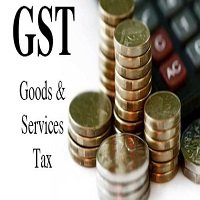The Goods and Services Tax (GST) was passed in a joint session of parliament on 1 July, 2017. It is the biggest tax reform in the history of the country. GST’s rollout abolished a plethora of regional taxes and ushered in a unified indirect tax regime across the country. This change was expected to cut red tape, facilitate movement of goods and services across state borders and widen the tax base by bringing erstwhile evaders into the system via the input tax credit radar. It was a radical reform.
Reforms of the scale of GST require a political compromise in our federal structure. This was especially true for state governments, which were surrendering most of their fiscal autonomy. To compensate for this sacrifice, the centre guaranteed 14% annual growth in taxes collected by the states in 2015-16 for a period of five years, ending in 2022.
As it turns three (on July 1), GST faces many challenges. The most important of these it is its ability to meet expectations of higher revenues. GST collections have failed to meet budget targets in 2018-19 and 2019-20. The Centre’s GST collections in 2018-19 and 2019-20 were only 78% & 90% of budgeted targets. Budget Estimate (BE) figures were revised downwards from Rs 7,43,900 crore in 2018-19 to Rs 6,63,343 crore in 2019-20. Even the 2020-21 BE figure is Rs 6,90,500 crore. This suggests that the centre initially overestimated GST’s revenue generation capacity. To be sure, some of this was also on account of a slowing of economic growth (but more on this shortly).
GST rates have been changed many times in the GST Council. Finance minister Nirmala Sitharaman herself termed this as a big problem while speaking at the HT Leadership Summit in December 2019. “I am not saying that people did it (reduced rates) thoughtlessly, but in the enthusiasm to reduce taxes, that framework which was originally agreed at stage one of GST was distorted”, Sitharaman said, explaining that lowering the tax rate impacted the input tax credit and transferred more taxes to the buyer. A Reserve Bank of India (RBI) report on state finances corroborated Sitharaman’s point. Against revenue neutral rate of 15.3% which was recommended by the Arvind Subramanian Committee, weighted average GST rate has been falling continuously and was just 11.6% in July and September 2019.





